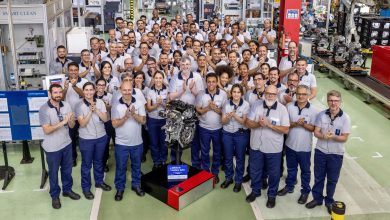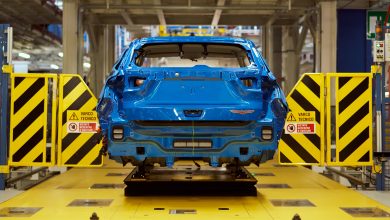Stellantis Kicks Off Production Of GSE “Firefly” Turbo Engines In Betim:
Betim Is Now Largest Powertrain Production Plant In Latin America...

This past week, Stellantis kicked off production of its Global Small Engine (GSE) turbo engine family at the company’s newest production plant located at the Fiat Automotive Complex in Betim, Minas Gerais (MG), Brazil. The production launch was celebrated with Stellantis CEO, Carlos Tavares, Head of the Americas, Mike Manley, and Antonio Filosa, Stellantis’ COO for South America.

The new factory has a production capacity of 100,000 units per year and required investments of R$ 400 million ($71.5 million USD), including investments from suppliers and Research & Development. This is the first phase of the plant, which starts to manufacture the turbocharged four-cylinder engine immediately, and later this year will expand with new additional investments of R$ 100 million ($17.9 million USD) and the production of the turbocharged three-cylinder will start.

With the start of production, the Betim plant becomes the largest powertrain production plant in Latin America with an annual capacity of 700,000 engines and 500,000 transmissions. The productive integration of the new unit with the Fire and Firefly engine lines promotes a high synergy of management, maintenance, logistics, and technical expertise.

“Stellantis opens a new era for our sustainable presence in Latin America and the start of production of this world-class GSE Turbo engine is great news for the Brazilian economy. I’m convinced that our talented and committed employees will make their best to ensure our customer’s satisfaction” said Stellantis CEO, Carlos Tavares, on the occasion of his first visit to Brazil since the creation of Stellantis, in January.
“The inauguration of this turbo engine plant represents a strategic step towards expanding our presence in Latin America. It also brings a lot of possibilities to our product range, as GSE Turbo engines combine the best performance and sustainability technologies, with gains in fuel consumption and emissions reduction. This new production will be a source of great pride and motivation for all of us”, added Antonio Filosa, COO of Stellantis for South America.

With more fuel economy, better performance, and less CO2 emissions, the new GSE Turbo family that has begun production at the Betim plant is composed of the codenamed T3 (1.0-liter) and T4 (1.3-liter) engines, both available in flex-fuel and gasoline variants. In the gasoline version, the turbocharged 1.3-liter MultiAir III inline-four-cylinder makes 180 horsepower and 210 lb.-ft. (270 Nm) of torque with a compression ratio of 10.5:1.

With world-class quality, the engines of the GSE family have technologies to reduce engine warm-up time, reducing gas emissions, and fuel consumption, especially in urban use (short-driven trips). The aluminum block, in addition to reducing the weight of the propellant, heats up faster due to the lower resistance to heat conduction. The oil heat exchanger helps to reduce the engine’s heating time, transferring heat from the water – which heats up faster – to the oil, which reaches the ideal temperature, reducing the engine’s, reducing the engine’s friction.

With world-class quality, the engines of the GSE family have technologies to reduce engine warm-up time, reducing gas emissions and fuel consumption, especially in urban use (short trips). The aluminum block, in addition to reducing the weight of the propellant, heats up faster due to the lower resistance to heat conduction. The oil heat exchanger helps to reduce the engine’s heating time, transferring heat from the water – which heats up faster – to the oil, which, reaching the ideal temperature, reduces the engine’s friction. On the other hand, the exchanger also prevents the oil from overheating, which brings reliability to the set.
Currently, the Firefly engines are equipped in numerous vehicles like the Jeep Renegade, Jeep Compass, Fiat Strada, Fiat 500X, Fiat Tipo, Fiat Panda, Fiat Mobi, Fiat Argo, Fiat Cronos, Fiat Uno, Fiat 500, and will be used in the upcoming Alfa Romeo Tonale.
Source: Stellantis LATAM






7 replies
Loading new replies...
Join the full discussion at the Mopar Insiders Forum →